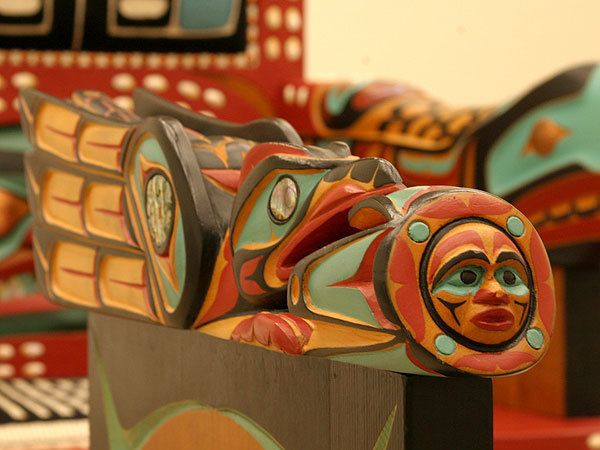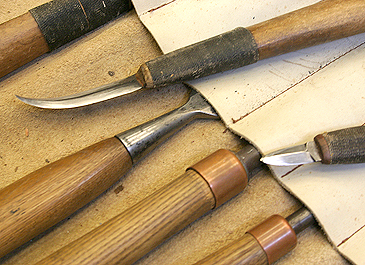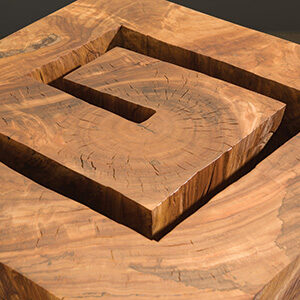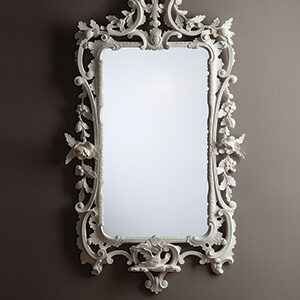Canada's Native Carving Traditions
First Nations artists keep old traditions alive and create new ones with brilliant totem poles and carved objects
VICTORIA, B.C., CANADA–Perhaps the most enlightening presentations at the Furniture Society Conference here last week were hosted by artists and wood carvers from Canada’s First Nations tribes.
Best known for their colorful totem poles, masks, and graphically-rich illustrations, two artists in particular had a lot of relevant advice for the furniture-making crowd that converged for this annual event. One was Robert Davidson, a member of the Haida tribe, who is among a group of contemporary artists infusing fresh life into the rich history of First Nations art.
Speaking to a crowd of about 70 wide-eyed furniture makers, Davidson said that he often straddles the line between tradition and artistic expression, and encouraged those in the audience to do the same.
“For so long we’ve been afraid to do something new because it was not traditional,” Davidson said. “Experimentation is important. If it works, it becomes part of the culture. If it doesn’t, it falls by the wayside.”

Tools of the trade. Modern-day native carvers used curved and straight carving knives, chisels, an adze, and modern power tools to create their works of art.
How they do it today
In addition to new forms and designs, modern power tools have also found their way into the tool box of these present-day indigenous artists. Davidson says he uses routers and chain saws to speed up the processes that were traditionally only done with improvised hand tools.
This admission caused at least one audience member to wonder about Davidson’s devotion to preserving traditional tools and techniques.
“When the white man came to our shores with his new tools, my ancestors readily adopted them,” Davidson replied. “As I got more experienced, I realized I didn’t have to do it (the traditional) way anymore.”
Another modern advancement that these artists take advantage of is acrylic paint. Prior to their contact with other nations, including China and the West, all First Nation art was painted with colors derived from local natural resources.
As Davidson explained it, paint was produced by smoking salmon roe for a day, then chewing it up and spitting the resulting mixture of pulverized salmon roe and saliva into a container. Red ochre was crushed and added to create red paint; charcoal was added to make black paint; baked and crushed clam shells were added to make white paint; and the hard-to find green paint was derived from a local clay.

Skilled craftsmen. First Nations carver John Livingston demonstrates carving techniques at the Furniture Society Conference.
Demonstrating the tools
Another wood carver and artist, John Livingston, was on hand to demonstrate the tools and techniques used to create giant totem poles, masks, and other sacred objects. Livingston was adopted into the Kwakwaka’wakw culture in the early 1960s while working as an apprentice carver, and now he creates some of the most coveted regional art there is. Livingston showed off his knife and adze collection while carving away on piece of cedar.
Posted: June 27, 2006
Photos: Matt Berger























Log in or create an account to post a comment.
Sign up Log in